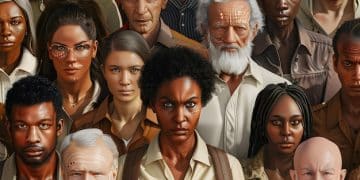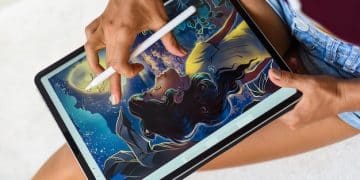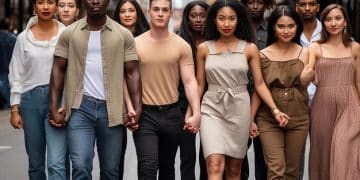The Future of Art Education in the US: Preparing Artists
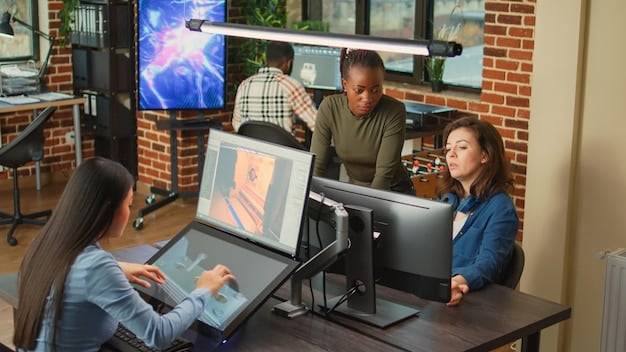
The future of art education in the US requires a dynamic shift towards interdisciplinary approaches, technological integration, and a focus on fostering entrepreneurial skills to prepare artists for the evolving demands of the 21st-century art world.
The landscape of art education in the United States is undergoing a significant transformation. The shift is necessary to equip artists with the skills and knowledge needed to thrive in the rapidly evolving 21st-century. The Future of Art Education in the US: Preparing Artists for the 21st Century demands a re-evaluation of traditional methods and the integration of new technologies, interdisciplinary approaches, and entrepreneurial skills.
Evolving Needs in Art Education
Art education is no longer confined to traditional mediums and techniques. The modern art world demands artists who are not only skilled in their craft but also adept at navigating the digital realm, understanding business principles, and collaborating across disciplines. This section explores the shifting landscape and the critical need for art education to adapt.
The Rise of Digital Art
Digital art has become an integral part of the contemporary art scene. From digital painting and sculpture to interactive installations and virtual reality experiences, technology has opened up new avenues for artistic expression. Art education must embrace these technologies to prepare students for the future.
- Providing access to cutting-edge software and hardware.
- Integrating digital art techniques into the curriculum.
- Encouraging experimentation with emerging technologies.
Interdisciplinary Collaboration
The most innovative art often arises from the intersection of different disciplines. Art education should foster collaboration between artists and professionals in fields such as science, technology, engineering, and mathematics (STEM). This cross-pollination of ideas can lead to groundbreaking artistic creations.
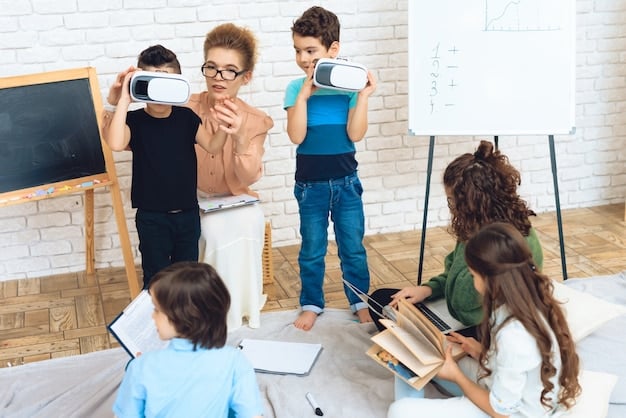
By embracing these changes, art education can ensure that artists are well-prepared to meet the challenges and opportunities of the 21st century. The integration of digital tools, interdisciplinary collaboration, and entrepreneurial skills will empower artists to thrive in a dynamic and ever-changing world.
Integrating Technology in the Art Curriculum
Technology’s role in art is undeniable. Art education needs to integrate technological tools and platforms to ensure students are well-versed in digital mediums. This integration should not replace traditional art forms but complement them, offering artists a broader range of expression.
The integration of these tools into the curriculum will provide students with a comprehensive understanding of both traditional and contemporary art practices, preparing them for a future where technology and art are inextricably linked.
Software and Digital Tools
Art programs must provide access to the latest software and digital tools. This includes programs for digital painting, graphic design, 3D modeling, animation, and video editing. Students should be taught how to use these tools effectively to bring their artistic visions to life.
Online Platforms and Communities
The internet has created vast opportunities for artists to showcase their work, connect with other artists, and build a following. Art education should teach students how to use online platforms and communities effectively. This includes creating online portfolios, participating in online art forums, and using social media to promote their work.
By integrating these technologies into the curriculum, art education programs can equip students with the skills they need to succeed in the digital age. This will not only enhance their artistic capabilities but also prepare them for the entrepreneurial challenges of the modern art world.
Fostering Creativity and Innovation
At its core, art education should foster creativity and innovation. Traditional art forms like painting, sculpture, and drawing remain essential. However, art education must encourage experimentation and push the boundaries of what is considered art.
Encouraging innovation and creativity will foster a new generation of artists who are not only skilled in their craft but also capable of pushing the boundaries of art and challenging conventional norms. This approach will ensure that art education remains relevant and vital in the 21st century.

Experimental Art Forms
Art education should expose students to a wide range of experimental art forms, such as performance art, installation art, and interactive art. Students should be encouraged to explore these mediums and develop their own unique artistic voices.
Encouraging Risk-Taking
Innovation requires risk-taking. Art education should create a safe and supportive environment where students feel comfortable experimenting, failing, and learning from their mistakes. This will help them develop the resilience and perseverance needed to succeed in the art world.
With art programs continually evolving, it’s important to encourage experimentation and push the boundaries of what is considered art.
Developing Entrepreneurial Skills for Artists
To thrive as a successful artist, solid business acumen is necessary. Art education should offer courses and workshops that cover topics such as marketing, branding, finance, and intellectual property. These skills enable artists to manage their careers effectively.
Marketing and Branding
Artists need to know how to market their work effectively. Art education should teach students how to create a brand, build an online presence, and use social media to promote their art. They should also learn how to write compelling artist statements and pitch their work to galleries and collectors.
- Crafting a unique brand identity.
- Building an online portfolio website.
- Networking with industry professionals.
Financial Literacy
Many artists struggle with financial management. Art education should provide students with basic financial literacy skills. This includes budgeting, bookkeeping, tax preparation, and investment strategies. These skills will help artists manage their finances and build sustainable careers.
By incorporating these entrepreneurial skills into the curriculum, art education programs can empower artists to take control of their careers and achieve financial success. This will not only benefit the individual artists but also contribute to the overall vitality of the art world.
The Role of Mentorship and Networking
Mentorship and networking are essential for aspiring artists. Connecting with established artists, curators, and other industry professionals can provide invaluable guidance and opportunities.
Connecting with Established Artists
Many art programs offer mentorship programs that pair students with established artists. These mentors can provide guidance, support, and advice, helping students navigate the challenges of the art world. Mentors can also help students build their professional networks and gain access to opportunities they might not otherwise have.
Building a Professional Network
Networking is crucial for artists. Art education should provide opportunities for students to connect with other artists, curators, gallery owners, and collectors. This can include attending art fairs, joining art organizations, and participating in group exhibitions. Building a strong professional network can open doors to new opportunities and help artists advance their careers.
The Importance of Diversity and Inclusion
Art education must embrace diversity and inclusion. Programs should actively recruit students from diverse backgrounds and perspectives. The curriculum should also reflect a wide range of artistic traditions and cultural influences.
By embracing diversity and inclusion, art education can create a more vibrant and equitable art world that reflects the richness of human experience. This will not only benefit individual artists but also contribute to the overall cultural landscape.
- Ensuring representation in the curriculum.
- Promoting cultural understanding and sensitivity.
- Creating a safe and inclusive learning environment.
Curriculum Reflecting Diverse Traditions
The art curriculum should include a wide range of artistic traditions and cultural influences. This will expose students to different perspectives and help them develop a more nuanced understanding of the art world.
Promoting Cultural Understanding
Art education should promote cultural understanding and sensitivity. This can be achieved through coursework, workshops, and discussions. Students should be encouraged to explore their own cultural identities and learn about the cultural identities of others.
Início da área da tabela minimalista –>
| Key Point | Brief Description |
|---|---|
| 🎨 Tech Integration | Integrating digital tools to match industry progression. |
| 🤝 Collaboration | Fostering partnerships between art and other sectors for innovation. |
| 💼 Entrepreneurship | Equipping artists with business skills for successful careers. |
| 🌍 Diversity | Promoting inclusivity for richness and broad representation. |
FAQ
▼
Technology integrates digital art and online platforms into curricula, expanding artistic mediums and networking. Students become adept in digital painting, graphic design, and social media promotion.
▼
Interdisciplinary collaboration fosters innovation by merging art with fields like science and tech. This cross-pollination enriches creativity, preparing students for diverse projects.
▼
Art entrepreneurship should integrate the fundamentals of marketing, branding, financial literacy, and basics of intellectual property. These skills empower artists to manage their careers and achieve financial stability.
▼
Mentorship from established artists offers guidance and connections. Networking opens doors to opportunities, building essential professional relationships for career advancement in the art world.
▼
Diversity and inclusion enriches art through varied perspectives and cultural backgrounds improving curriculum and access. Diverse environments enhance learning and promote understanding.
Conclusion
The Future of Art Education in the US: Preparing Artists for the 21st Century requires a comprehensive approach that integrates technology, fosters interdisciplinary collaboration, develops entrepreneurial skills, and embraces diversity and inclusion. By adapting to these evolving needs, art education can empower artists to thrive in a dynamic and ever-changing world, ensuring that the arts continue to enrich society for generations to come.
